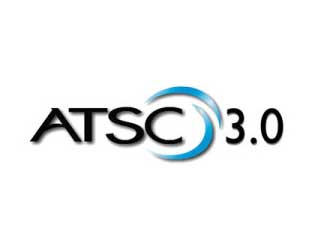As part of a greater effort to bring transparency to the FCC, the Commission on Thursday (2/2) released the details of a Notice of Proposed Rulemaking (NPRM) that would authorize television broadcasters to use the “Next Generation” broadcast television transmission standard associated with recent work of the Advanced Television Systems Committee — known universally as ATSC 3.0 — “on a voluntary, market-driven basis” while they continue to deliver current-generation TV broadcast service to their viewers.
ATSC 3.0 is being developed by broadcasters with the intent of merging the capabilities of over-the-air broadcasting with the broadband viewing and information delivery methods of the Internet, using the same 6 MHz channels presently allocated for DTV.
Proponents say the new standard has the potential to greatly improve broadcast signal reception, particularly on mobile devices and television receivers without outdoor antennas, and will enable broadcasters to offer enhanced and innovative new features to consumers, including Ultra High Definition (UHD) picture and immersive audio, more localized programming content, an advanced emergency alert system (EAS) capable of waking up sleeping devices to warn consumers of imminent emergencies, better accessibility options, and interactive services.
The proceeding will see the FCC seek to adopt rules “that will afford broadcasters flexibility to deploy ATSC 3.0-based transmissions, while minimizing the impact on, and costs to, consumers and other industry stakeholders.”
Specifically, it asks for public input on the voluntary use of ATSC 3.0 transmissions and to incorporate by reference the relevant portions of the ATSC 3.0 standard into our rules. “We seek comment on which components of the standard should be incorporated into our rules,” the FCC says.
Additionally, to ensure that consumers won’t lose access to TV channels in their community, the FCC proposes to require “local simulcasting” for stations that choose to deploy Next Gen TV transmissions so that broadcasters will continue to provide their existing ATSC 1.0-based services to their viewers.
The NPRM also calls for MVPDs (cable companies) to not be required to carry ATSC 3.0 signals during the Next Gen TV transition. Service and interference protection and “public interest obligations” are also up for public comment.
The NPRM comes following an April 2016 joint petition for rulemaking from the NAB, America’s Public Television Stations, the Advanced Warning and Response Network (AWARN) Alliance and the Consumer Technology Association seeking the voluntary, market-driven proviso. The Commission received 35 comments and 14 replies to the petition.
Mark Richer, President of the ATSC, said, “The development of ATSC 3.0 is a landmark in broadcasting, with hundreds of the best technical minds in the industry working on this next generation technology. The ATSC sees the Commission’s Notice as another important step forward for Next Gen TV. Core elements of the ATSC 3.0 standard already are approved and proven, which we hope will give the FCC and broadcasters confidence for voluntary implementation of ATSC 3.0. We’ll look forward to seeing how various stakeholders respond to the Commission’s Notice, and we’re hopeful that the NPRM process will be completed in a timely manner.”
Pearl TV, a business organization representing Cox Media Group, The E.W. Scripps Company, Graham Media Group, Hearst Television, Nexstar Media Group, Meredith Local Media Group, Raycom Media and TEGNA, applauded the FCC’s publication of the NPRM.
“As broadcasters focused on the development and deployment of new technology, Pearl is pleased that the FCC is launching a rulemaking that would allow the voluntary adoption of next generation TV,” Pearl TV Managing Director Anne Schelle said. “ATSC 3.0 will give broadcasters the tools they need to compete in a vastly different environment than when digital TV was first imagined. The move to an Internet Protocol-based system will deliver more content to viewers from more sources and insure that over-the-air broadcasting remains the primary resource for breaking news, emergency alerts, and a TV experience tailored to the desires of the viewer.”
Meanwhile, NAB EVP/Communications Dennis Wharton chimed in by saying the NPRM “will foster technological innovation, increase opportunities for minority and female owners, and create new and unique services for consumers.”





